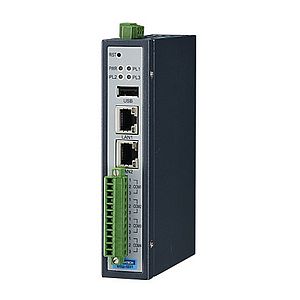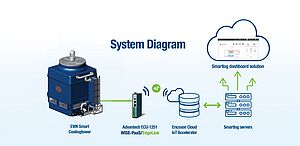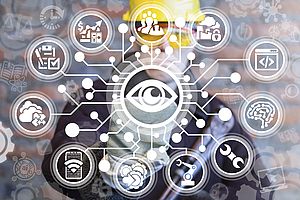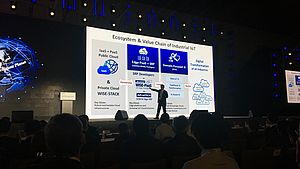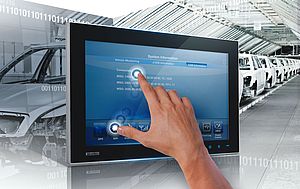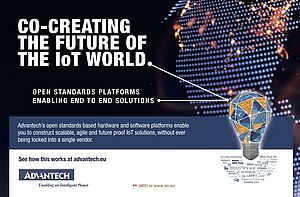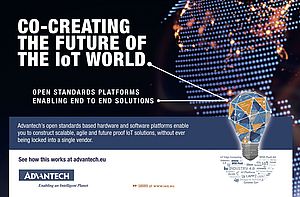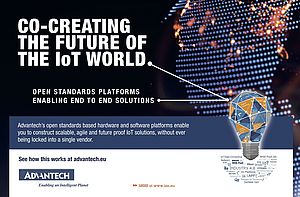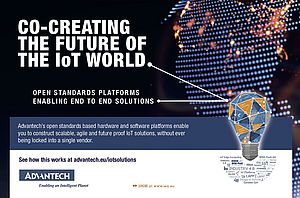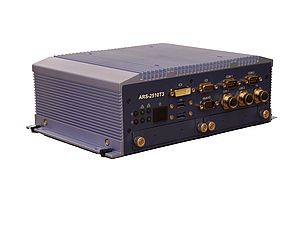IEN Europe: The industrial sector expects a lot from 5G and the digital transition. Do you think that 5G will be a resolutive technology to improve connectivity and speed up the digital transition?
L. Tsai: 5G is not just one technology, it’s a set of different technologies. For cell phones, 5G will be ready very soon with a technology called eMBB (Enhanced Mobile Broadband) that will allow, among other things, to download movies very quickly.
In the industrial sector, 5G technologies such as URLLC (Ultra Reliable Low Latency Communication) for ultra-low latency and mMTC (Massive Machine Type Communication) for massive machine-type communication will really have a huge impact on industrial IoT. The reason is that these 5G technologies bring ultra-low latency and ultra-low power, which are the main features needed to transfer a great amount of information from the sensors and make industrial IoT possible. Furthermore, with 5G we’ll be able to connect up to one million devices and that’s simply amazing. Connecting so many devices in a wide area will significantly improve monitoring and management processes.
However, the technology is not there yet. Only when use cases for URLLC and mMTC will be available – likely in two years – we will see a real and huge implementation of 5G in the industrial space, especially from those companies that have already shifted to low power 4G and LTN (Low Throughput Networks) for IoT. They will be able to quickly upgrade to 5G.
IEN Europe: How the deployment of new technologies like IoT and 5G is impacting our society?
L. Tsai: When we talk about smart cities and transportation, the impact is huge. But as far as industrial IoT is concerned, it depends on the vertical. Smart manufacturing can especially have a significant impact on our society, even if at first glance it seems that it doesn’t have anything to do with us. The question is: how can we use IoT technology to improve our factory? Whereas in the public sector it’s more important to find solutions to increase safety. In the transportation sector, for instance, safety is a real concern, more than increasing user experience. As regards the environmental sector, many countries in the world experience pollution in water and the air. In this case, the latest technologies can be used in a way that helps governments monitor and take actions. In order to do that, you need to use many sensors, guarantee low latency and get real-time feedback for the collectivity. This is why we can say that technology first increases our safety in all ways.
In smart manufacturing, things work differently. The objective is to improve not only safety but also production, efficiency, and quality. 5G technology for IoT is not there yet and probably it won’t take place until 2021-2022 when significant technologies like URLLC and mMTC will be ready. Thanks to 5G and the other standards available, we’ll be able to detect and monitor nearly one million devices and get lots of data, which will make monitoring and predictive maintenance more accurate.
In the case of AV (Autonomous Vehicles), 5G will tremendously improve the safety of vehicles. That’s why everyone is waiting for 5G technology. Safety and efficiency will be successfully improved.
IEN Europe: So, do you think that 5G could improve safety not only in industrial manufacturing but in a broader sense?
L. Tsai: Yes, sure. The point is how to improve safety for people, for us. I think that new technologies definitely enhance working conditions, but we have to bear in mind that the key point is to improve quality. Only if we work on adding more quality to production, we can increase the efficiency and business results. The strategy sometimes is just to grow the number of robots and have fewer people on shop floors, but this is not enough for quality improvement.
In our factory, we implemented AI and machine vision for production in one of our stations, which is called AI AOI (Artificial Intelligence in Automated Optical Inspection), or AI-based inspection. This way we could increase the product quality in a station where it’s very hard for humans to remain vigilant for many hours. Improving quality doesn’t mean to have fewer people. This is not the point. The point is: we don’t implement IoT because we have to, but because we see the value for our business.
IEN Europe: How can you make your customers understand the importance of going in this direction?
L. Tsai: If customers don’t know what they want, it’s hard for us to tell them what they should do. That’s why we implement industrial IoT in our factory first. This way, when customers don’t know what they could or should do, we tell them: 'This is what Advantech is doing’. We implement many IoT applications in our factory floor, production lines, and in the facility and energy efficiency management. We show them what we do, what we improved, and the business results that we got, so they can have an idea. Then, we start to think about the added value for them and we discuss it with the customer.
Some customers know what they want to improve. In this case, we tell them how our technology can help. It really doesn’t matter which IoT project we want to implement in the factory or smart city infrastructure, we just have to define the objective and the result we want to achieve. At that point, we know which critical actions we must undertake.
IEN Europe: Which industry and market do you see more mature in the implementation of IoT solutions?
L. Tsai: In terms of vertical markets, I would say that smart manufacturing is the most reacting one, as it is mainly privately-owned. Businesspeople usually want to improve the quality, efficiency, and performance of their companies. There is a big market there and it’s easier to implement new projects. While in the public sector, responsiveness depends on countries and policies. Country-wise, we see that where the government is strong, the infrastructure can be created very quickly. In China, for instance, if they want to do something, they just do it immediately.
In Taiwan, things normally go pretty fast, but there are cases where people have different opinions and the transition is slowed down. I believe that in highly populated countries there is the urgency to implement IoT projects, especially for smart cities, to increase people’s quality of life.
Sara Ibrahim





